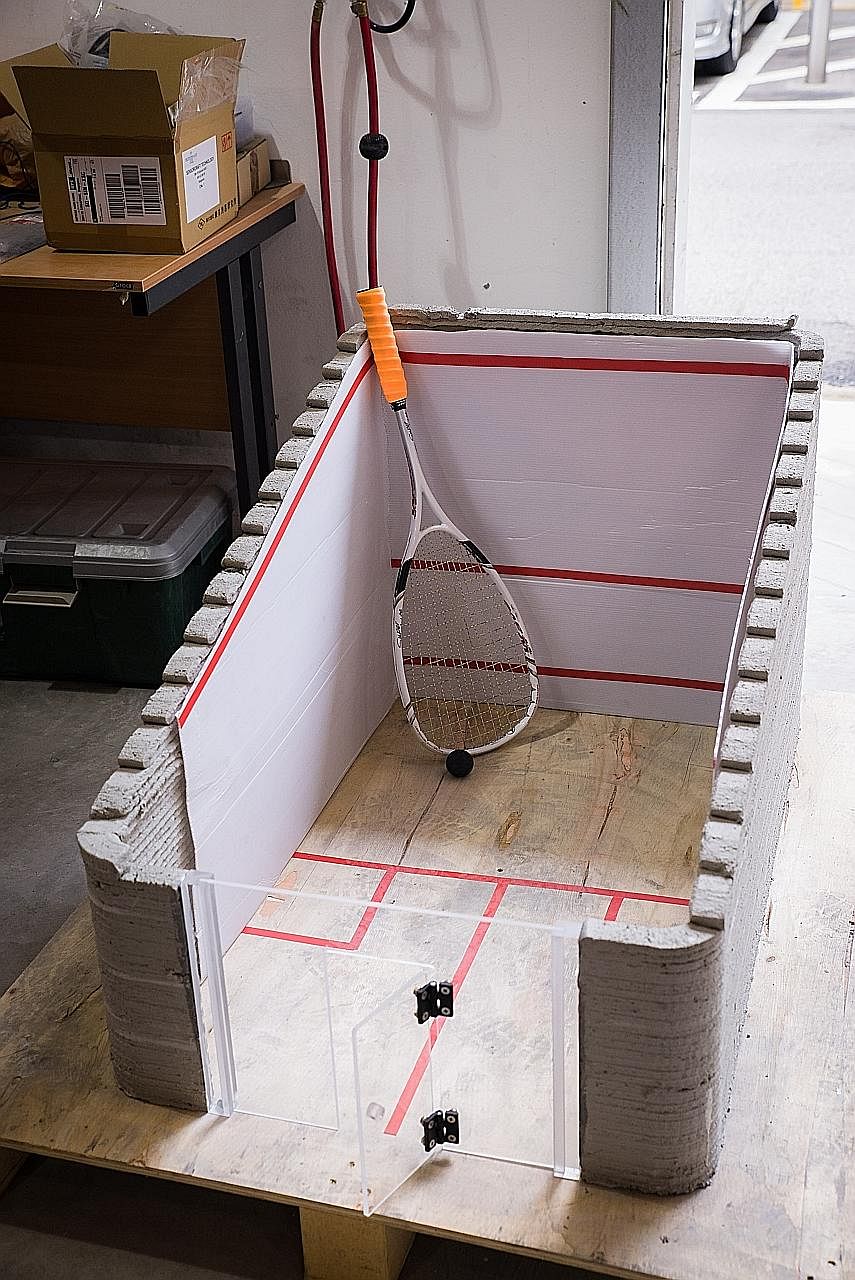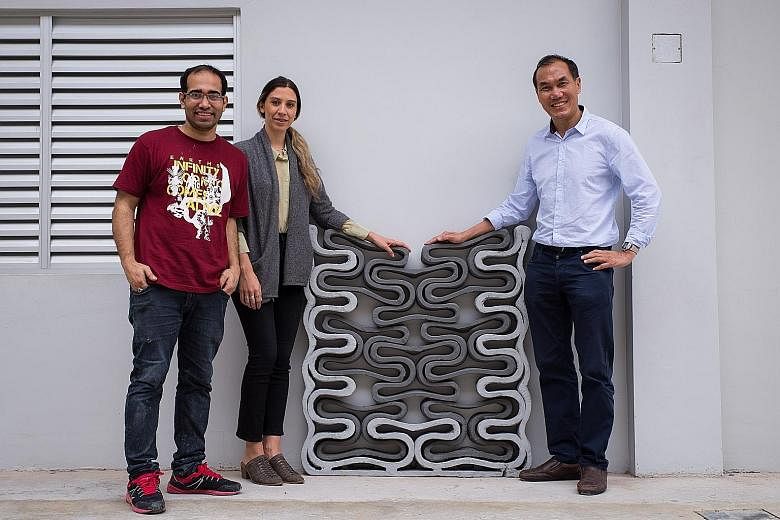The last bits left over from burning coal - fly ash - could one day be used in the structures of buildings.
Researchers from Nanyang Technological University (NTU) have successfully 3D-printed a material that resembles concrete by combining fly ash, steel slag - a by-product of the steel-making process - and some chemicals, the identity of which is a trade secret.
Research papers on the process of creating and 3D-printing the new material were published in scientific journals Cleaner Production and Materials Letters recently.
The project has been in the making for two years, said lead researcher Tan Ming Jen from the School of Mechanical and Aerospace Engineering. The team faced challenges such as determining the optimal flow rate of the material and how fast it sets before pinning down the exact steps.
The material is 3D-printed layer by layer. Hence, the rate at which the material flows and sets will determine if the layers can fuse together properly.
Huge amounts of the by-product from coal burning are produced each day as it remains deeply ingrained in the energy production activities of some countries such as China.
But while the study used fly ash from an Indian coal power plant, the technology could potentially also be applied to recycled glass and possibly fly ash produced at local waste-to-energy plants from burning trash, the researchers said.

The wide usage of such a material, if made from incinerator fly ash in future, could channel waste away from Singapore's only landfill in Pulau Semakau, potentially prolonging its lifespan, which is currently expected to end by 2035.
Associate Professor Tan said the material could help cut the construction industry's carbon footprint.
Concrete is a highly environmentally unfriendly but widely used synthetic material whose manufacture alone is responsible for about 5 per cent of global carbon dioxide emissions. Large amounts of carbon dioxide are released in the process of creating concrete, which involves mining and transporting the raw materials, to heating them to over 1,400 deg C in a kiln, and the subsequent chemical process of turning limestone into small rocks of cement.
The printed material is as strong as plain concrete. But the researchers are looking at how it can be strengthened to make it a suitable substitute for reinforced concrete.
Singapore Contractors Association president Kenneth Loo said 3D printing is still a rather new concept to the construction industry.
How well such a material is accepted by the sector will largely depend on its cost, he said. New materials often cost more at first due to the lack of economies of scale. But this problem will ease as demand grows. "It just like green buildings. They were previously more expensive but as time went by, acceptance went up and the supply within the industry increased, resulting in a fall in the premium for such buildings," he said.
He added that the possibility of a material which recycles by-products as an alternative to cement would be welcomed. "Social responsibility has grown in our industry, people are more aware and willing to embrace 'greener' products."

